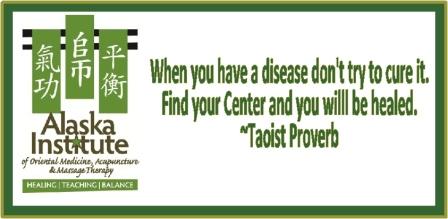Thoracic Outlet Syndrome
by Natalie Efird
by Natalie Efird
Thoracic Outlet Syndrome comprises a collection of disorders that all involve compression of either a nerve, vein and/or artery in the thoracic area between the base of the neck and the axilla (armpit) (Rubin, M., 2016). Symptoms include pain and paresthesias (pins and needles sensation) in neck, shoulders, arms, and/or hands, often accompanied with sensory impairment, weakness, muscle atrophy, cyanosis, and swelling in the affected areas (Rubin, M., 2016).
IMAGE 1
Compression in three different areas of the thoracic outlet is caused by bone or muscle abnormalities (Rubin, M., 2013). Numerous reasons for abnormalities in bones, muscles, and other connective tissues of the thoracic region range from postural distortions due to underdeveloped or overdeveloped muscles, broken bones that healed abnormally, bone spurs, extra clavicular rib, trauma to neck and shoulders, damage to spinal discs, and secondary conditions (e.g. diabetes, congestive heart condition, edema, obesity, pregnancy, etc.) can bring about bone or muscle abnormalities leading to TOS (McMullen, C., 2017).
Although diagnosis and classification of thoracic outlet syndrome lacks standardization, frequently the conditions are identified as three different syndromes:
IMAGE 2
- Anterior Scalene Syndrome or Scalene Anticus Syndrome – TOS in the Anterior and middle scalene
- Pectoralis Minor Syndrome or Hyperabduction Syndrome – TOS beneath the pectoralis minor muscle
- Costoclavicular Syndrome or Edens Syndrome – TOS between the clavicle and the first rib
IMAGE 2
Relaxation and increased circulation in the thoracic region are the major benefits of treating TOS with massage (Massage Education, 2010-2017). Relaxing the muscles relieves pressure on the nerves and/or blood vessels and with increased circulation tissues are nourished facilitating nerve and muscle regeneration and pain reduction (Massage Education, 2010-2017). A variety massage techniques are used to free impingements caused by abnormalities in muscles and other connective tissues.
Modification of Massage for Thoracic Outlet Syndrome
Upper Body Pain Path Treatment (McMullen, C., 2017):
· Warm the back
· Neck massage
· Shoulder massage – pull from spine out
· Warm the arm
· Knead arm
· Hand massage and squeeze fingers at the tips and at the sides at base of nails
· Small Intestine (SI) meridian pain path (shoulder blade area)
o SI points 9 – 15, thumb circle each point 8 times, repeat pattern 3 times
IMAGE 3
· Large Intestine (LI) meridian pain path (forearm and hand)
o LI points 11 - 9 thumb press each point 8 times while holding LI 4 and rotating arm, repeat pattern 3 times
IMAGE 4
· Traction arm – 3 directions
· Massage back and neck
· Close
Chinese Medicine and Thoracic Outlet Syndrome
Chinese medicine considers pain to be stagnation of Qi or blood, or both. Individual diagnosis is necessary as each person’s underlying causal factors are likely different. Sometimes stagnation responsible for pain is due to Cold or Damp, which can obstruct the flow of Qi and blood (Joswick, D., 2017). Paresthesias (pins and needles sensation) or tingling is considered Wind in Chinese medicine and the Chinese Liver system is in charge of nerves (McMullen, C., 2017). Another factor to consider when diagnosing an individual is whether the condition is caused by an Excess (Yang) or a Deficiency (Yin); with Excess (Yang), muscle tension, over use, and inflammation are often present and with Deficiency (Yin), lack of tension, inactivity, not enough blood/undernourishment is found (McMullen, C., 2017). In addition to massage, cupping can be used for Excesses, and for Deficiencies moxa has a good effect (McMullen, C., 2017). The ultimate treatment goal of Chinese medicine concerning TOS is to invigorate Qi and Blood circulation, unblock the channels and ease the pain (Gu. S., 2007).
Chinese medicine considers pain to be stagnation of Qi or blood, or both. Individual diagnosis is necessary as each person’s underlying causal factors are likely different. Sometimes stagnation responsible for pain is due to Cold or Damp, which can obstruct the flow of Qi and blood (Joswick, D., 2017). Paresthesias (pins and needles sensation) or tingling is considered Wind in Chinese medicine and the Chinese Liver system is in charge of nerves (McMullen, C., 2017). Another factor to consider when diagnosing an individual is whether the condition is caused by an Excess (Yang) or a Deficiency (Yin); with Excess (Yang), muscle tension, over use, and inflammation are often present and with Deficiency (Yin), lack of tension, inactivity, not enough blood/undernourishment is found (McMullen, C., 2017). In addition to massage, cupping can be used for Excesses, and for Deficiencies moxa has a good effect (McMullen, C., 2017). The ultimate treatment goal of Chinese medicine concerning TOS is to invigorate Qi and Blood circulation, unblock the channels and ease the pain (Gu. S., 2007).
References
Image 1. Retrieved on 6/10/2017 from: http://www.coen1.org/thoracic-outlet-syndrome.jpg
Image 2. Retrieve on 6/10/2017 from: http://www.physiownc.com/wp-
content/uploads/2012/05/thoracic-outlet-syndrome.jpg
Image 3. Retrieved on 6/10/2017 from: http://www.natural-health-zone.com/images/SI-9-15.png
Image 4. Retrieve on 6//12/2017 from: http://bjdonline.org/wp-content/uploads/2015/12/E3-
posterior-view.png
Gu, Sherman (2007). Thoracic outlet syndrome treated with acupuncture, manual techniques
and self-stretching exercises: A case report. Australian Journal of Acupuncture and
Chinese Medicine, Vol. 2(1). Retrieved from: http://www.ajacm.com.au
Joswick, D. (2017). Treating peripheral neuropathy with acupuncture and Chinese medicine.
Acufinder: Acupuncture referral service: Learning & resource center articles. Retrieved from: https://www.acufinder.com/Acupuncture+Information/Detail/Treating+Peripheral +Neuropathy+with+Acupuncture+and+Chinese+Medicine
Massage Education. (2010-2017). Thoracic outlet syndrome and how massage can help!
Retrieved from: http://www.massage-education.com/thoracic-outlet-syndrome.html
Massage Therapy Reference. (2013, July 16). Thoracic outlet syndrome massage (TOS
Massage). Retrieved from: http://www.massagetherapyreference.com/thoracic-outlet-syndrome-massage/
McMullen, C. (2017, May 17). Thoracic outlet syndrome and upper body pain path treatment.
Address at the Alaska Institute of Oriental Medicine, Acupuncture, and Massage Therapy, Anchorage, AK.
Rubin, M. (2016, September). Thoracic outlet compression syndromes (TOS). Merck Manual.
Retrieved from: http://www.merckmanuals.com/professional/neurologic-disorders/peripheral-nervous-system-and-motor-unit-disorders/thoracic-outlet-compression-syndromes-tos












